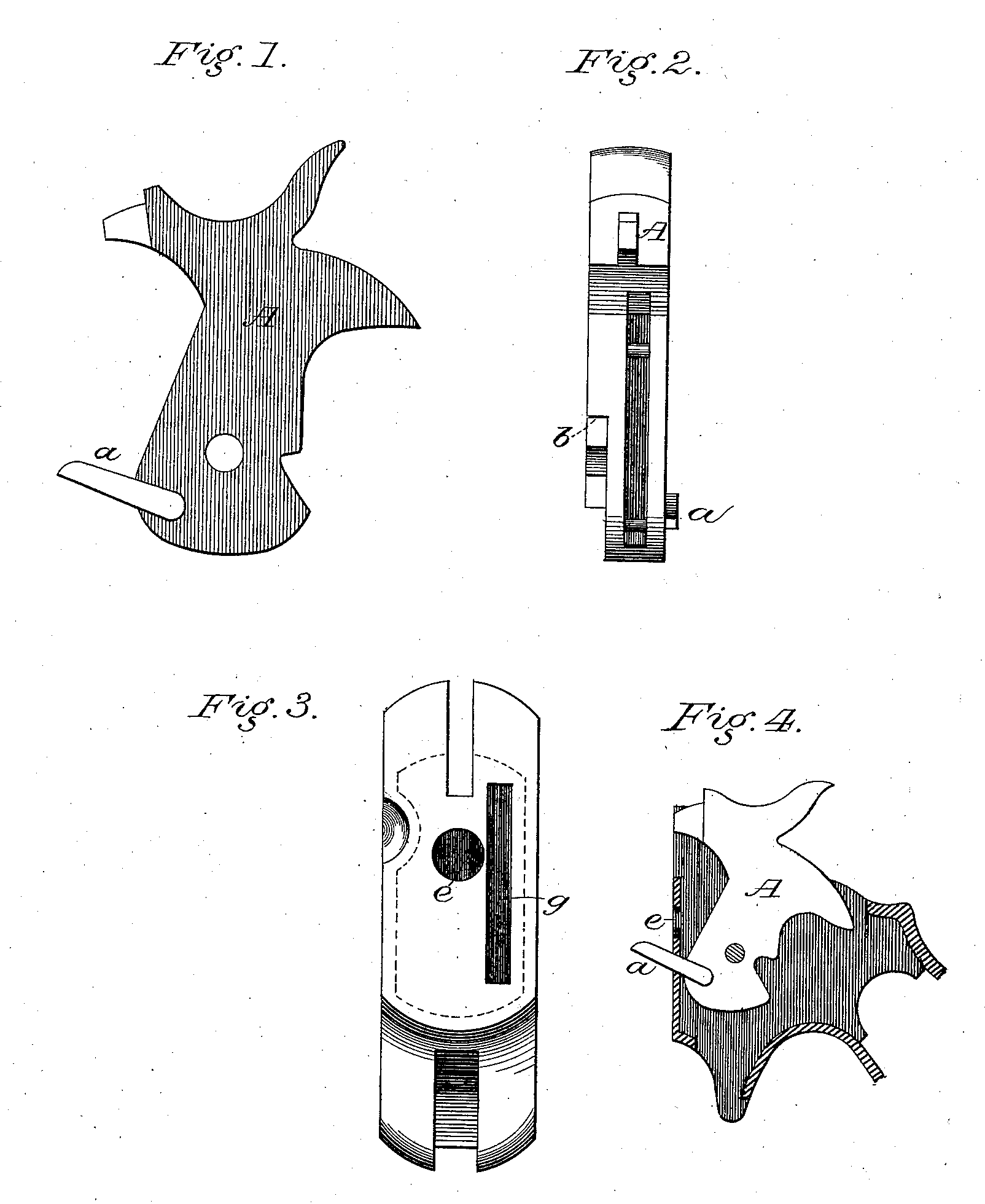US 215721
UNITED STATES PATENT OFFICE.
GEORGE W. CILLEY, OF NORWICH, CONN., ASSIGNOR OF ONE-HALF HIS RIGHT TO THE HOPKINS AND ALLEN MANUFACTURING COMPANY, OF SAME PLACE.
IMPROVEMENT IN FRE-ARMS.
Specification forming part of Letters Patent No. 215,721, dated May 27, 1879; application filed January 31, 1879.
To all whom it may concern:
Beit known that I, George W. Cilley, of the city of Norwich, county of New London, and State of Connecticut, have invented a new and useful Improvement in Revolving Fire-Arms, of which the following is a clear and concise description, reference being had to the accompanying drawings.
My improvement relates to that class of fire-arms in which the magazine-cylinder is rotated by a hand or lever attached to and working with the hammer.
My immediate object is to secure a simple, cheap, and expeditious method of inserting the hand and hammer in a pistol-frame constructed without a removable side piece, said hand and hammer having been previously fitted and assembled.
In the annexed drawings, Figure 1 represents the hammer A and hand a assembled ready for insertion in the frame. Fig. 2 is a front view of the same, showing the hand a secured in place on the side of the hammer. It also shows at b, opposite the hand a, a recess in the hammer, which (said recess) is the essential feature of my improvement. Fig. 3 is a front view of a pistol-frame, showing the slot g, through which the hand, when in service, reaches the rotating cylinder.
e is an opening in the frame to receive the rear end of the pin on which the cylinder rotates.
The continuous dotted lines, Fig. 3, represent the internal coring of the frame when it is cast, whereby a flange or rim is projected inward at the top, thereby reducing materially the width of the slot through which the hammer is inserted in the frame.
Fig. 4 represents a longitudinal section through the lock-frame, showing the hammer A in position.
In my improvement the hammer is milled down on the side opposite the hand, as shown at b, the depth of the cut being equal to the thickness of the hand. Thus the united thickness of the hand and hammer at the lower end of the hammer is the same as the thickness of the hammer alone above the recess b.
To insert the hammer and hand in the frame, drop the lower end of the hammer in the frame-slot until the shoulder on the hammer (caused by milling down the hammer at b) strikes the frame. Then, with a sidewise movement, bring the hand under the flange and into the space left by coring. The hammer may now be entered to the depth required and secured in place.
The following advantages are gained: First, the hand and hammer may be entered and removed without loss of time; second, a degree of leverage amply sufficient to rotate easily the magazine-cylinder is obtained; third, as the hammer fills and closes the frame-slot the arm has a finished and tasty appearance, showing no unsightly holes or slots in the frame; fourth, the hammer and frame slot are of the most approved width.
I claim—
In combination with a pistol-frame constructed without a removable side plate, a hammer provided with a recess opposite the hand, as shown at b, for the purpose of facilitating the entrance and exit of the hammer and hand, as herein described, and for the purpose specified.
In witness whereof I have hereunto set my hand and seal this 29th day of January, 1879.
GEO. W. CILLEY. [L. S.]
In presence of—
F. H. Allen,
Henry H. Hopkins.

